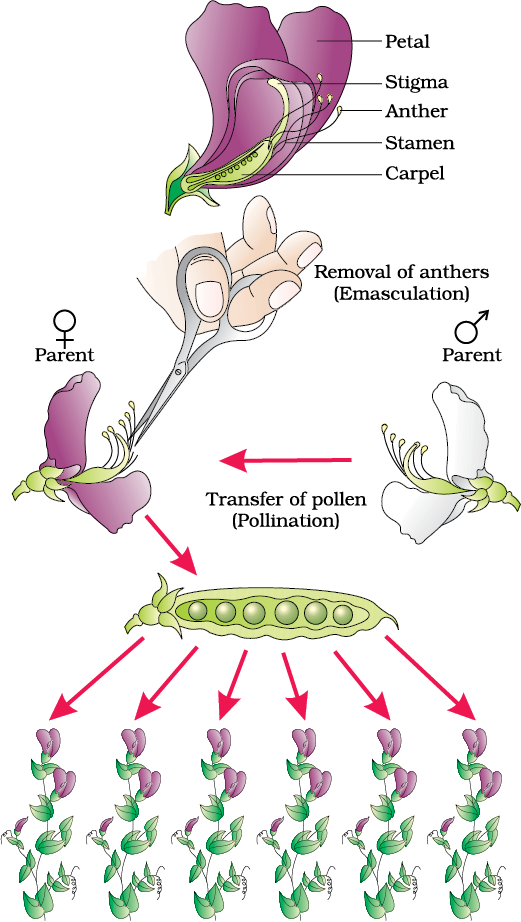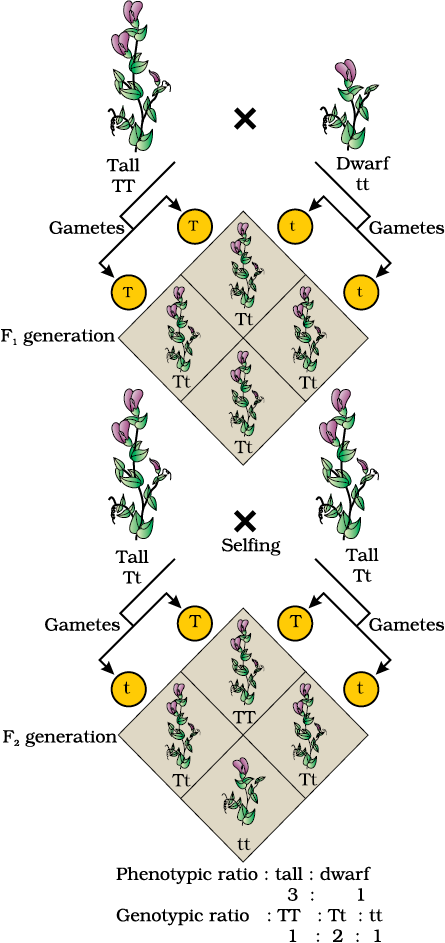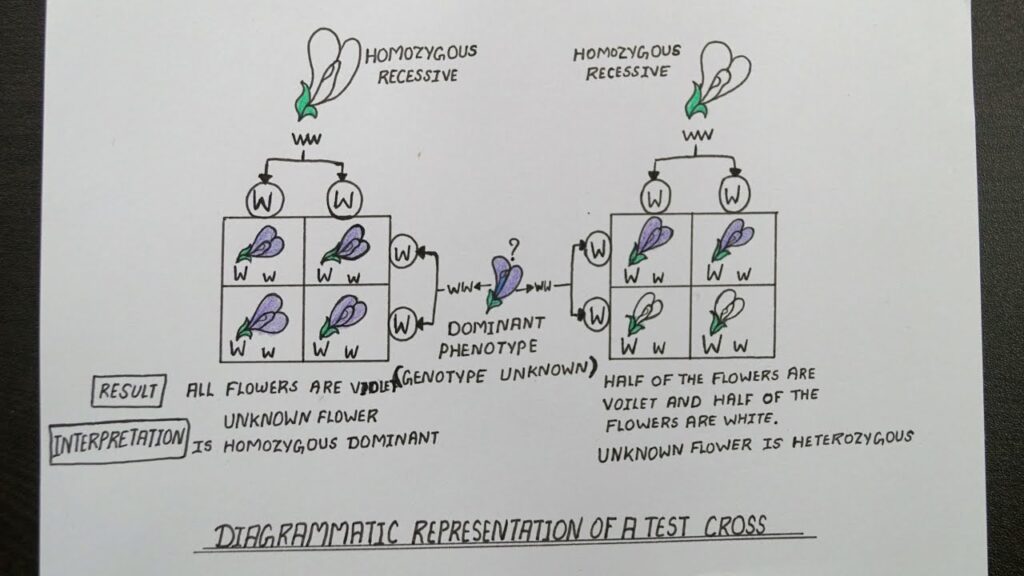Introduction
Inheritance of one gene
Inheritance is a fundamental principle of genetics that explains how traits are passed from parents to offspring. In this context, we’ll explore the inheritance of a single gene, providing an understanding of its mechanisms, implications, and examples
Understanding Gene Inheritance
Basic Genetics
A gene is a unit of heredity made up of DNA, residing at specific locations on chromosomes. Genes encode instructions for the synthesis of proteins, which perform a variety of functions in the body. Each individual has two copies of each gene, one inherited from each parent. These copies, or alleles, can be identical (homozygous) or different (heterozygous)

Mendelian Inheritance
The simplest and most well-known pattern of gene inheritance was described by Gregor Mendel in the 19th century. Mendel’s laws of inheritance include.
Law of Segregation: Each individual has two alleles for a given trait, which segregate during gamete formation, so each gamete carries only one allele for each trait.
Law of Independent Assortment: Alleles of different genes assort independently during gamete formation, leading to genetic variation.
Dominant and Recessive Alleles
Inheritance of one gene
Alleles can be dominant or recessive. A dominant allele is expressed in the phenotype even if only one copy is present, while a recessive allele is only expressed when two copies are present. For instance, if “A” is a dominant allele and “a” is a recessive allele, the possible genotypes and their corresponding phenotypes would be:
AA: Dominant phenotype
Aa: Dominant phenotype
aa: Recessive phenotype

Punnett Squares
A Punnett square is a tool used to predict the genotypes and phenotypes of offspring based on the genotypes of the parents. It helps visualize how alleles combine during fertilization.
Example: Cystic Fibrosis

Genetic Basis
Cystic fibrosis (CF) is an autosomal recessive disorder caused by mutations in the CFTR gene. To develop CF, an individual must inherit two defective CFTR alleles, one from each parent.
Inheritance Pattern
Consider parents who are both carriers of the CF mutation (genotype Ff, where “F” represents the normal allele and “f” the mutant allele). Using a Punnett square:
FF: 25% chance – No CF, not a carrier
Ff: 50% chance – Carrier, no symptoms
ff: 25% chance – Affected by CF
Thus, there is a 25% chance their child will have CF, a 50% chance the child will be a carrier, and a 25% chance the child will be unaffected and not a carrier.
.
Implications of Single-Gene Inheritance
Genetic Disorders
Many genetic disorders follow Mendelian inheritance patterns, including sickle cell anemia (autosomal recessive) and Huntington’s disease (autosomal dominant). Understanding these patterns aids in genetic counseling and disease management.
Genetic Testing
Advances in genetic testing allow for the identification of carriers and early diagnosis of genetic disorders. This information can inform reproductive decisions and personalized treatment plans.
Ethical Considerations
The ability to predict genetic conditions raises ethical questions. Issues include genetic privacy, potential discrimination, and the implications of genetic editing technologies like CRISPR.
Genetic Counseling
Genetic counseling provides individuals and families with information about their genetic risks. Counselors interpret test results, offer support, and guide decision-making processes regarding family planning and health management.
Beyond Mendelian Inheritance
Incomplete Dominance
In some cases, neither allele is completely dominant, resulting in an intermediate phenotype in heterozygotes. For example, in snapdragons, red (RR) and white (WW) flowers produce pink (RW) offspring.
Codominance
Codominance occurs when both alleles are equally expressed in the phenotype. A classic example is the ABO blood group system, where individuals with genotype AB express both A and B antigens.

Multiple Alleles and Polygenic Traits
Some traits are controlled by multiple alleles or several genes (polygenic inheritance). For instance, human blood type involves three alleles (IA, IB, and i), while traits like height and skin color are polygenic
Conclusion
The inheritance of a single gene, while seemingly straightforward, reveals the complexity and elegance of genetic mechanisms. From Mendelian principles to modern genetic testing, our understanding of gene inheritance continues to evolve, offering insights into human biology and opening new avenues for medical advancements. As we navigate the ethical and practical implications, the study of genetics remains a cornerstone of biological science, shedding light on the intricate tapestry of life.
.
A gene is a segment of DNA that contains the instructions for the development, function, growth, and reproduction of organisms. Genes are the basic unit of heredity and determine specific traits.
Genes are inherited from parents to offspring. Each parent contributes one allele for each gene, resulting in a pair of alleles for every gene in the offspring. These alleles can be identical or different.
Dominant Alleles: Express their effect even if only one copy is present (represented by a capital letter, e.g., “A”).
Recessive Alleles: Express their effect only if two copies are present (represented by a lowercase letter, e.g., “a”).
A Punnett square is a diagram that is used to predict the genotype and phenotype combinations in genetic crosses. It helps visualize how alleles from each parent combine to form the offspring’s genotype.
Homozygous: Having two identical alleles for a particular gene (e.g., AA or aa).
Heterozygous: Having two different alleles for a particular gene (e.g., Aa).
Law of Segregation: Each individual has two alleles for each gene, which segregate during the formation of gametes. Each gamete receives one allele.
Law of Independent Assortment: Genes for different traits can segregate independently during the formation of gametes.
.
4 thoughts on “Inheritance of one gene”